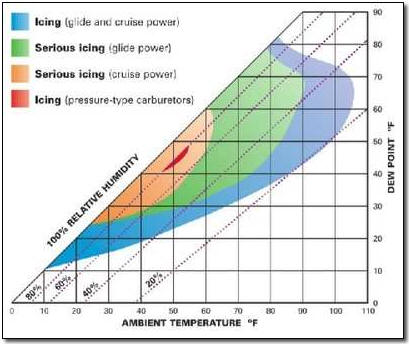Subscriber question:
"Is carburetor ice a concern when you are operating in hot, humid climates?" - Pat M.
Bob:
“Depending on altitude and other ambient conditions, it is possible to get carburetor ice in hot, humid climates such as central Florida. This is more likely to occur at idle, or during cruise power operations.
Symptoms would initially include unexplained loss of engine RPM, and ultimately engine roughness and subsequent stoppage.
 Temperatures in the carburetor throat drop due to both pressure drop in the carburetor venturi and the process of evaporation of gasoline. This drop is capable of reducing temperatures to well below freezing, which in turn causes humidity in the air to deposit ice in the carburetor eventually blocking it up.
Temperatures in the carburetor throat drop due to both pressure drop in the carburetor venturi and the process of evaporation of gasoline. This drop is capable of reducing temperatures to well below freezing, which in turn causes humidity in the air to deposit ice in the carburetor eventually blocking it up.
Use carburetor heat whenever you suspect ice. If ice exists, expect rough running until the ice clears.
A carburetor air temperature gauge is a useful instrument and unless you have one, use full carb heat if you need to use it at all. Use of partial carb heat can create another set of problems by increasing an otherwise satisfactory temperature to one conducive to carb ice.
Use of carburetor heat reduces available power and changes your air/fuel ratio due to reduced density of the heated air. As a result, it is necessary to re-lean the mixture in cruise, after carb heat is applied. Don’t forget to re-adjust the mixture after turning off your carb heat.
Note that when carb heat is on, intake air is unfiltered, therefore minimize the use of carb heat on the ground.”

